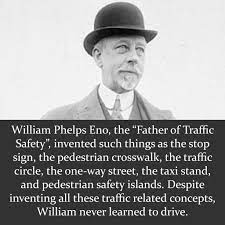History of signal system design
- Mario Petruccelli

- Oct 28, 2021
- 2 min read
Developments from different times in history
Global image signal systems must respond to functionality, nomenclatures of local legislation and conventions to achieve the communication objective.
From the beginning, beings have felt the need to communicate through signs. Cave paintings describing hunts or hands in caves to leave a mark denote that impulse to leave a message. The first to "design" signal systems were the Romans. The famous phrase:
"All roads lead to Rome" arises from the largest road network of antiquity.
In order to help travelers orient themselves, the Romans resorted to signs, maps (Tábula Peuntigeriana) and pocket guides. Until the automobile industrial revolution at the dawn of the 20th century, this system remained.
But with the need to respond to new road needs, traffic signs evolved. Thinking about a transit signal system was indispensable. Everything was chaos in the cities. The first milestone was marked by the STOP signal, created by William Phelps Eno, considered the father of road safety.
As you will always see, the needs of "order" and communication generate answers. Today our life is governed by conventions. Red light. Green light. Pictograms, arrows. All of them, indispensable pieces for the development of signal systems.
On the other hand, BRANDS and corporate identity or global image as the great Catalan designer Joa Costa (1989) calls it, look for new solutions for archigraphic and signage developments. These needs and my own, have marked my designer profile. The challenge of developing and applying signal and branding systems has led me to study and specialize in these disciplines.
Beyond the purely academic and cultural, new topics have emerged to provide solutions to the problems of different abilities: Blindness, Daltonism, Deafness, Paralysis, etc.
Undoubtedly, this universe of brand and signals is complex and must often be approached from different aspects and by forming multidisciplinary teams. The designer is only the instrument. The encoder. And the wonderful thing about these developments is that once applied they become the user's heritage. The passion for communicating. By coming up with solutions that improve the experience of those who use them, they lead me every day to innovate and train myself. I like to think that the brand is the integrating concept of the product. Plan. Encode. Design. Design. Think and finally take something invisible, an idea, to an object / message that everyone can see.
I like to address the complexity of simplicity. Because simplicity is the most complex thing to do.




















Comments